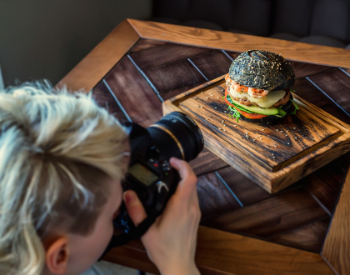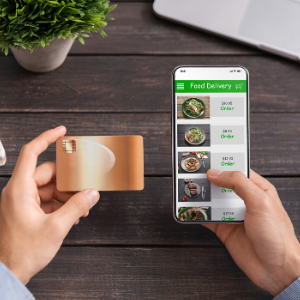With individuals living life on the go and the advancement of technology over the years, foodservice establishments continue to see a spike in take out and delivery orders. To grab the attention of customers that consistently order food online, restaurants need to ensure their online menu is easy to read and navigate. In this detailed article, we provide you with 10 ways to optimize your menu for take out and delivery orders to satisfy customers’ needs and maximize profits.
1. Don’t Be Afraid To Edit Your Menu
The truth is that there are certain meals on restaurant menus that aren’t ideal for delivery or take out. There are some meals that won’t hold their shape, texture, or taste if customers don’t eat them right away. For example, the melted cheese and guacamole on loaded nachos can make chips soggy and difficult to eat. This makes it crucial to ask yourself the following questions when deciding which meals should or shouldn’t be included on your establishment’s delivery menu:
- How long does it take to prepare this meal?
- How long does it take for this meal to get soggy?
- Will this meal taste the same by the time it gets to customers?
- Does this meal require specific packaging that I don’t have?
- Can this meal be packaged in a way that it won’t get messy and spill?
If after answering these questions you realize that a particular meal isn’t ideal for take out or delivery, don’t be afraid to leave it off of your take out menu. While it may be one of your top-selling dine-in items, not adding it to your take out menu will prevent customers from having a bad experience and writing poor restaurant reviews online.
2. Include Add-Ons And Customization Options
Many patrons customize dishes on the menu when they dine at restaurants. Whether it’s adding chicken to a salad or removing tomatoes from a burger, menus on third-party delivery apps and websites should also allow guests to customize meals.
To make customizing food easy, there should be an “add-ons” or “customization” option that pops up on the screen once a meal is selected. This allows customers to see all the applicable add-ons available as well as their coordinating upcharge when customizing their orders. It also ensures that your business is charging the appropriate amount of money for additional toppings.
In addition, it’s ideal to have a “special instructions” area when a dish is selected. It provides patrons with a quick and easy way to remove particular ingredients in case they are allergic to or dislike a specific food item.
3. Include À La Carte Side Dishes
To optimize your online menu and increase sales, it’s crucial to include a section on the menu with à la carte side dishes. Whether customers want to eat something light for lunch or include an additional side to their order, an à la carte section on your menu allows them to pick and choose any food items they'd like. By not including à la carte side dishes on your website or third-party delivery apps, patrons may decide to order food from another establishment.
4. Keep Your Menu Up To Date
As a business owner, there is nothing worse than receiving calls from angry customers over mispriced items. Whenever you decide to change the cost of a food item, let managers know so they can make sure prices are updated right away on online menus.
It’s also important to make sure discontinued menu items are immediately removed from the online menu. For instance, your restaurant may no longer serve fettuccine alfredo but customers can still place orders for the pasta if it’s on the menu. This forces employees to call customers and inform them that what they selected is no longer available which will likely lead to patrons getting upset and canceling their orders.
5. Update Your Menu According To Feedback
Business owners know that restaurant reviews from customers are their best friend. These reviews provide details on the different ways your establishment can be improved. When a customer receives their take out or delivery order, if possible, send them an automated email or message that kindly asks them about their experience.
Their feedback will provide you with details of their experience with your meal. For example, you'll know if customers received a soggy meal or oils leaked through your take out container. This allows you to make appropriate changes to the recipes or preparation of meals on your take out menu to better fit your customers' wants and needs.
6. Include A Description Of Menu Items
When writing a description of a menu item, you don’t want it to be a paragraph that talks about how it was created and where all the ingredients come from. It’s unlikely that customers will read a long description and it may leave them confused if they decide to. Instead, you want to describe the ingredients, taste, and texture of the dish in an appetizing way while being straight to the point. It’s ideal for the description of each food item to be no longer than 2 sentences.
7. Add Pictures To Your Menu
There’s nothing that draws the attention of hungry patrons more than high-quality photos of food. Your
customers eat with their eyes which makes it essential to include a good photo of each food item on your
online menu. If a meal looks appetizing in a photo, there are some patrons that will order it without
looking at the ingredients or price. Having appealing food images on third-party delivery apps and
online menus will help increase your sales which makes it essential to follow these tips when taking
pictures:
- Minimize clutter: Avoid having spoons, forks, napkins, and other items in the photo because it can take away the attention from food.
- Use a neutral background: Using dark, light, wooden, and other neutral backgrounds emphasize your menu item in the photo.
- Use multiple angles: Not all photos on your online menu have to be taken from the same angle. As you’re taking pictures, you’ll notice that some images look good from a birds-eye view while others look better from a 45-degree angle.
- Shoot in natural light: Using artificial light, such as lamps and overhead lights, may create an orange or yellow color cast to food photos.
- Arrange food neatly: How you position the dish on a plate and where you place garnishes should be thought out. The goal is to arrange food in a unique way to create visual interest and balance.
8. Highlight Popular Items & Dietary Restrictions
Every menu has food items separated into different categories, such as appetizers, entrees, and desserts. However, highlighting some of your top-selling meals in popular items or best sellers categories will benefit online customers. They may not be sure what to order because of all the different options available and will rely on these categories to make a decision.
If your business offers vegan or vegetarian options, you can separate them into their own category. It’ll make it easy for customers that are looking for these food options to select a meal. If you only have a few vegan options and believe it would be best if they stayed in the category they are already in, you can also add a vegan or vegetarian symbol next to the meal’s name. This allows the vegan and vegetarian options to stand out so customers can quickly spot them.
9. Make Your Menu Mobile-Friendly
Most individuals place take out and delivery orders through their mobile devices. Creating a menu that is
compatible with cell phones will streamline the ordering process and prevent customers from getting
frustrated. Your menu is considered to be mobile-friendly if:
- The menu is easy to navigate
- Pictures and content resize to fit on the screen
- The layout of the menu looks the same as it does on a desktop
10. Include Your Kids Menu
Don’t forget about the kids! While they aren’t likely to be the ones placing orders, there are a lot of parents that order take out or delivery for their entire family. If your establishment has a kids menu for in-person dining, there should be a section on your food delivery menu for kids as well. Leaving out your selection of food items for kids on your online menu may be the reason why a family decides to order take out from another establishment.









